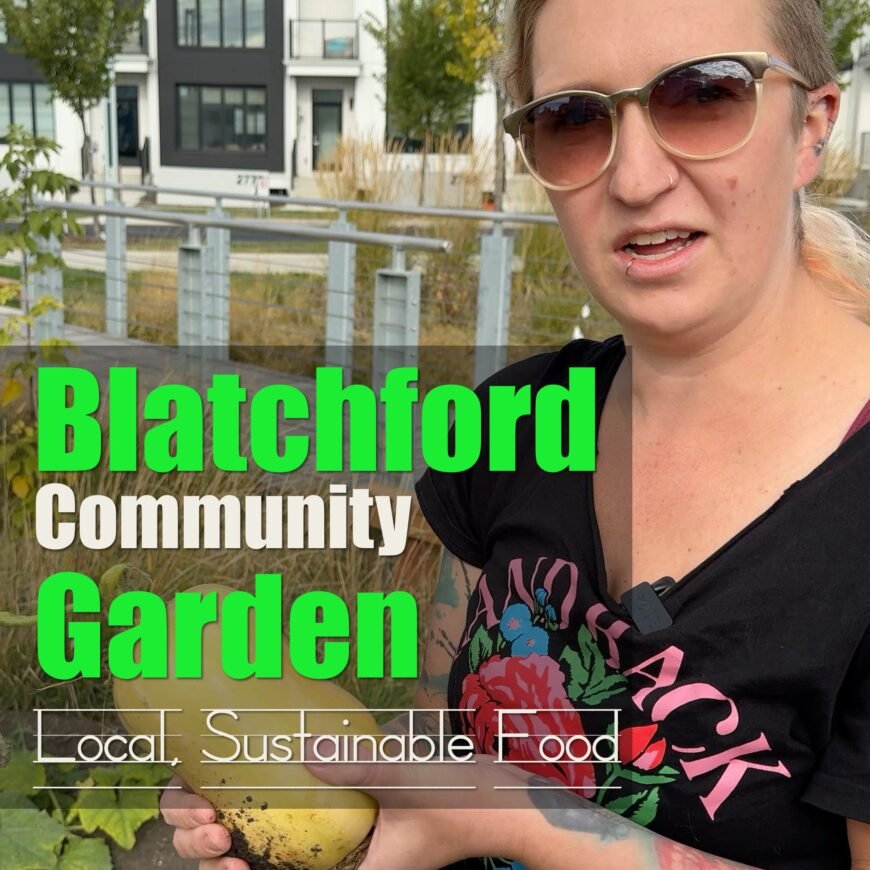Episode Summary – Food Sustainability and Climate Resilience
The Blatchford Community Garden, located within Edmonton’s carbon-neutral Blatchford neighborhood, serves as a prime example of a thriving urban sustainability initiative. This detailed briefing document synthesizes key information from the provided audio transcript, outlining the garden’s operational model, its environmental and social benefits, and the broader context of community gardening in Edmonton. The garden demonstrates a successful blend of individual and collective gardening efforts, a strong commitment to natural practices, and significant contributions to local food security and community building.
Introduction to the Blatchford Community Garden
The Blatchford Community Garden is a central feature of the Blatchford neighbourhood, an area specifically designed as a “carbon-neutral community.” It was established “before the residents began moving in,” a proactive approach that has been “really appreciated” by residents like Heather McKenzie. The garden embodies a “mix of collective and individual gardening,” providing diverse opportunities for community engagement and food production.
Operational Model and Structure
The garden operates on a sign-up basis in the spring, says MacKenzie Gordon, Blatchford community garden coordinator. This accommodates various levels of commitment:
Individual Raised Beds: Many residents “just sign up to have their own bed. You come and take care of it yourself.” This allows for personal gardening pursuits within a communal setting.
Group Garden Beds: A unique aspect of Blatchford is the presence of “a few garden beds here that are shared by our group gardeners.” Participants “kind of take shifts and take turns to look after the produce in these beds.”
Produce Distribution: For the group beds, “At the end of the year, everyone who helped with the group gardening gets to have some of it and the extra goes to the food bank.” This highlights a commitment to food security and community welfare.
The garden also incorporates innovative sustainable infrastructure, featuring a “water cistern, which will be collecting storm overflow water from condo buildings that don’t exist yet.” This forward-thinking design integrates water management with green space.
Environmental Sustainability and Ethos
A core principle of the Blatchford Community Garden, mirroring “most community gardens,” is “working with nature and not against it.” Key environmental practices include:
Pesticide-Free Cultivation: A strict policy of “not using any pesticides in the garden, trying to keep it all natural” promotes ecological health and safe food production.
Pollinator Beds: The garden dedicates space to a “wildflower pollinator bed” to “welcome pollinating insects into the garden and encourage them to be around.” This supports biodiversity and healthy ecosystems crucial for food production.
Social Impact and Community Building
The Blatchford Community Garden fosters strong social connections and addresses community needs:
Community Engagement: The garden acts as a hub for residents, with a “community garden committee” actively “building partnerships with all sorts of folks in the neighborhood.”
Accessibility to Green Space: Recognizing the “high density” of the Blatchford neighborhood, the garden provides essential green space for those who “not everybody will have access to be able to garden their own yards.” The vision is that “if people can’t garden in their yard, then they should be able to garden over by the playground or by the apple orchard.”
Partnerships with Community Agencies: The garden offers beds to various “community agencies,” demonstrating an inclusive approach. Examples include:
Catholic Social Services (working with “new migrants to the neighbourhood”) (former partners)
The Métis Nation of Alberta.
Amiskwaciy Academy (where “kids in the horticulture and kind of the like land stewardship classes have been working on these” beds).
Broader Context: The Rise of Community Gardens in Edmonton
The Blatchford garden is part of a larger trend in Edmonton, with “more than 80 community gardens” across the city, operated by “community members or groups such as community leagues.” Laura Cunningham-Shepeley of the Edmonton Federation of Community Leagues highlights the growing interest in sustainable initiatives:
Response to Climate Change: “We’ve seen over the last 10 years our climate is changing. People are interested in solar. They’re interested in sustainable initiatives.”
Demand for Local Food: “They’re interested in where their food comes from… We’re seeing such an explosion of gardening, of food production, local food production from boulevarding to community gardens.”
Contribution to Local Food Economy: Community gardens are “really important for local sustainability. They really contribute to the local food economy. People really want to know where their food is from and have less impact on the environment while doing so.”
Funding Challenges and Future Outlook
While community gardens are flourishing, the support infrastructure faces challenges:
Past Support: The City of Edmonton previously supported garden establishment through Sustainable Food Edmonton, offering “$5,000 startup grants to community groups.”
Funding Cuts: However, “the funding for that program was cut.”
Impact of Cuts: Chappelle warns that these cuts “will seriously impact leagues and others wanting to start gardens.”
Continued Support: Despite this, the Edmonton Federation of Community Leagues (FCL) “will continue to work with leagues one-on-one.”
Conclusion
The Blatchford Community Garden stands as a testament to the power of community-led initiatives in fostering sustainable urban living. Its integrated approach to food production, environmental stewardship, and social cohesion provides valuable lessons for other urban developments. While facing challenges regarding city-level funding, the dedication of residents and community organizations ensures the continued growth and impact of these vital green spaces. The model of Blatchford demonstrates how intentional planning and community engagement can create vibrant, sustainable neighborhoods.

